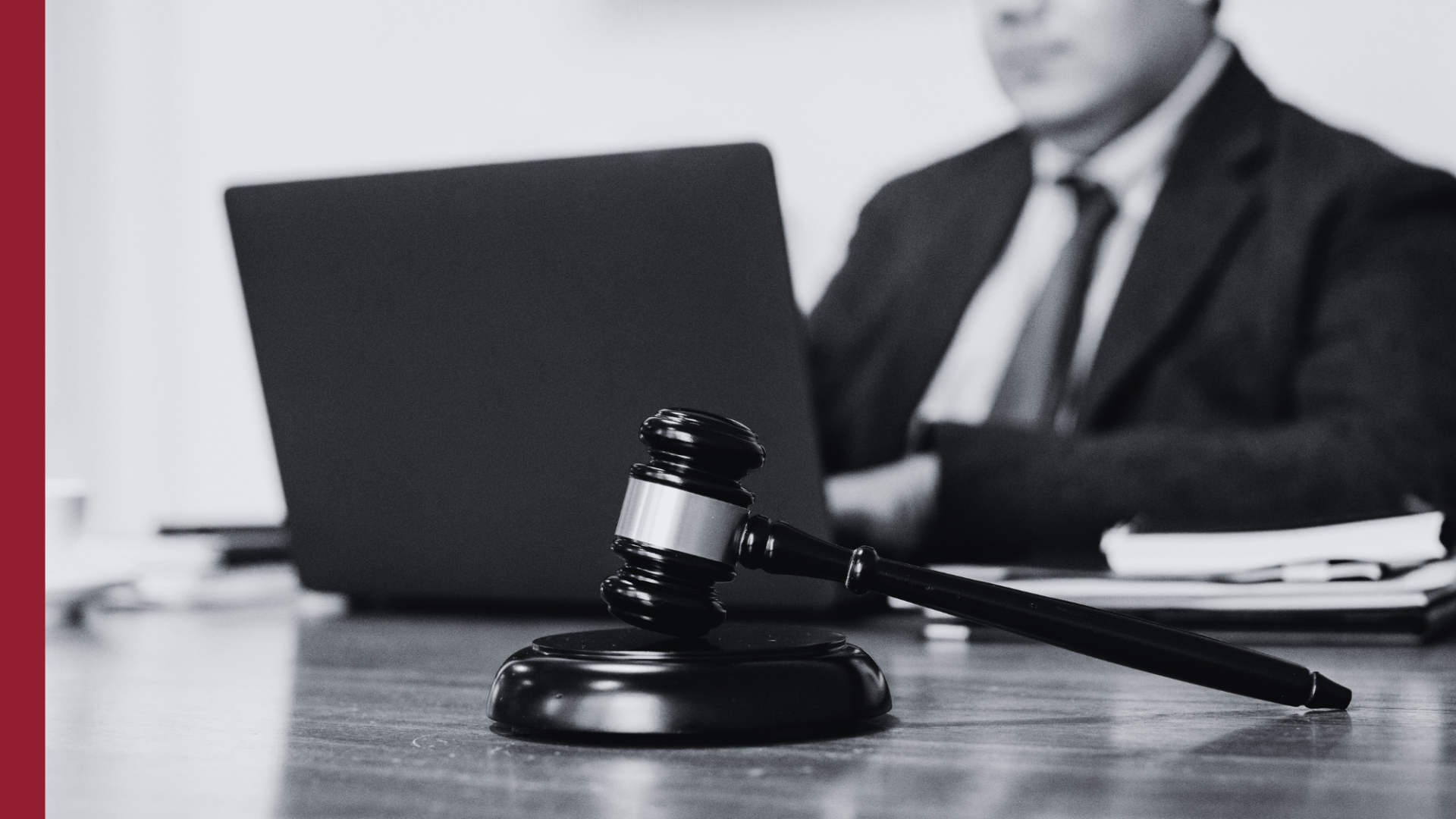In everyday life, both individuals and companies may face situations where their actions or those of third parties cause damage to others. In many cases, liability rests squarely with the party causing the harm, but it is not always that simple. There are legal scenarios where liability can be shifted to another party and give rise to mechanisms to protect victims and ensure reparation of the damage. In this context, at Ambler we analyse a fundamental concept within law and insurance: vicarious liability.
Without further ado, let’s look at what vicarious liability is, how it differs from other forms of liability, in which cases it applies, and why it is crucial to have an adequate policy that provides for this coverage.
What is subsidiary civil liability?
Subsidiary civil liability is the legal concept that allows a third party to assume the obligation to respond for damages caused by another person when the latter is not in a position to do so. It is, therefore, a secondary liability: the injured party must first try to get the direct tortfeasor to repair the damage, and only if this is not possible can he or she take recourse against the subsidiary liable party.
This type of liability is based on principles of fairness and guaranteed redress. Its purpose is to protect the victim by ensuring that someone bears the burden of reparation when the tortfeasor is unable to do so.
For example, a minor who commits an act of vandalism and causes economic damage to a shop. If he or she is unable to respond on his or her own behalf, the parents or legal guardians could be held vicariously liable, according to the applicable regulations.
In the corporate sphere, subsidiary liability is often claimed against parent companies for acts of their subsidiaries, or against main contractors for acts of their subcontractors.
What is the difference between direct and subsidiary liability?
For a clear understanding of the functioning of this concept, it is necessary to compare it with direct civil liability. The distinction between the two is essential for legal and insurance purposes.
Direct civil liability is attributed to the person or entity that has caused the damage, whether by action or omission. It is the central figure in any claim, and is the first target of the injured party.
On the other hand, vicarious liability is presented as a legal safety net: it does not apply automatically, but depends on whether the main liable party is unable or unwilling to respond.
Another key difference lies in the burden of proof. In order to claim direct liability, it is sufficient to prove the causal link between the perpetrator’s conduct and the damage caused. On the other hand, to claim subsidiary liability, it is necessary to prove the impossibility of claiming reparation from the directly liable party, as well as the legal relationship between the directly liable party and the subsidiary.
In many court proceedings, the judge may declare subsidiary liability only after the remedy against the direct debtor has been exhausted, or in parallel but conditional on the direct debtor’s failure to perform.
Where is subsidiary civil liability regulated?
Subsidiary civil liability is contemplated in several regulations of the Spanish legal system. It is a set of provisions that apply depending on the context:
Civil Code
Articles 1902 et seq. lay down the general bases of civil liability, and allow for the existence of vicarious liability in certain cases.
Penal Code
Article 120 expressly establishes the cases of subsidiary civil liability for criminal acts. For example, parents are vicariously liable for offences committed by their unemancipated minor children; companies are vicariously liable for offences committed by their employees in the exercise of their duties, unless they prove that they acted with all due diligence.
Civil Procedure Act
It allows enforcement of a judgment to be directed against the person who is vicariously liable when the main defendant fails to fulfil his obligation.
Insurance Contract Law (Law 50/1980)
Although it does not define subsidiary liability, it establishes the general conditions of cover for damage to third parties and the duty of insurers to cover the risks assumed by contract, which may include subsidiary cover clauses.
Sectoral regulations
In sectors such as construction, transport or education, there are specific provisions determining when and how this liability can be attributed to developers, main contractors, educational establishments or logistics companies.
When does subsidiary civil liability apply?
The application of this figure occurs in a variety of settings, and its emergence often coincides with complex structures of responsibility, employment or dependency relationships, or environments of inadequate supervision. Some of the most common situations are described below:
Employment and business relationship
Employers can be held vicariously liable for acts or omissions of their employees, especially if there has been insufficient control over their activity. This is common in cases of accidents at work, negligence, or when an employee causes harm to a third party in the performance of his or her duties.
A common example is in the transport of goods: if a company driver causes a serious accident and does not have the resources to compensate the victim, the company that hired him can be held liable, if its employment or commercial relationship is proven.
Subcontracting and construction
In construction, it is common for companies to contract other companies to execute certain parts of the project. If a subcontractor commits negligence that results in damage, and is not liable to the victim, the main contractor may be held vicariously liable.
This figure is also found in contracts for facility maintenance, private security, industrial cleaning, etc. When the service is outsourced, but general supervision is maintained, there may be subsidiary liability of the contractor.
Educational and family environment
Schools may be vicariously liable for damage caused by pupils, in cases where it is proven that surveillance or safety protocols were not correctly applied.
Similarly, parents or legal guardians are vicariously liable for the unlawful acts of minors in their care, which applies even in criminal cases, when a minor under 14 years of age (not criminally chargeable) causes damage.
Ámbito penal
In addition to the aforementioned cases, the Criminal Code includes situations where legal persons or institutions may be vicariously liable for crimes committed by those who act under their supervision, such as administrators, employees or subordinates.
In this respect, the principle of “due control” is key: if it is proven that the company failed to implement prevention measures, internal protocols or effective controls, it may be obliged to repair the damage caused by a crime committed by one of its members.
Insurance implications
From a risk management perspective, the existence of subsidiary liability requires a careful review of the policies taken out. Many companies assume that with a general liability policy they are covered for any situation, but this is not always true.
Common limitations and exclusions
Some insurers explicitly exclude cases of subsidiary liability, or make it conditional on a final court decision. Others only cover such claims if they have been asserted in the context of a formal employment relationship. It is therefore essential to check whether the policy explicitly covers subsidiary liability, whether it includes legal defence costs in this type of proceedings, whether it covers damages caused by subcontractors or external collaborators, and whether it covers the actions of employees outside the workplace or outside working hours.
The importance of having a specialised brokerage
At Ambler we work with leading insurers in the Spanish market and have a deep understanding of how to structure policies tailored to the realities of each client. Our work is based on three pillars:
- Transparency: We believe that trust starts with honest and straightforward communication. If there is room for confusion, then it is not the right insurance. Our commitment is that you fully understand what you are taking out and why.
- Peace of mind: our aim is for you to live with the certainty of being protected. The right cover prevents costly unforeseen events, but also gives you the peace of mind of knowing that everything is under control, with no surprises or hidden costs.
- Work: we are driven by perseverance and continuous improvement. It is not enough for us to do well: we strive to do better every day. Our dedication is focused on evolving with you and adapting to your needs.
Prevention is not optional
We cannot consider subsidiary civil liability as an exception, but must consider it as a common reality in certain environments such as business, education or family. Its application can have a significant economic and reputational impact if adequate coverage is not in place.
Desde Ambler, te ayudamos a entender este tipo de riesgos y a construir soluciones a medida, que protejan tu actividad y tu patrimonio. Si tienes dudas sobre tu actual póliza de responsabilidad civil, o deseas asesoramiento personalizado, contacta con nuestro equipo.
Your peace of mind starts with proper protection.





